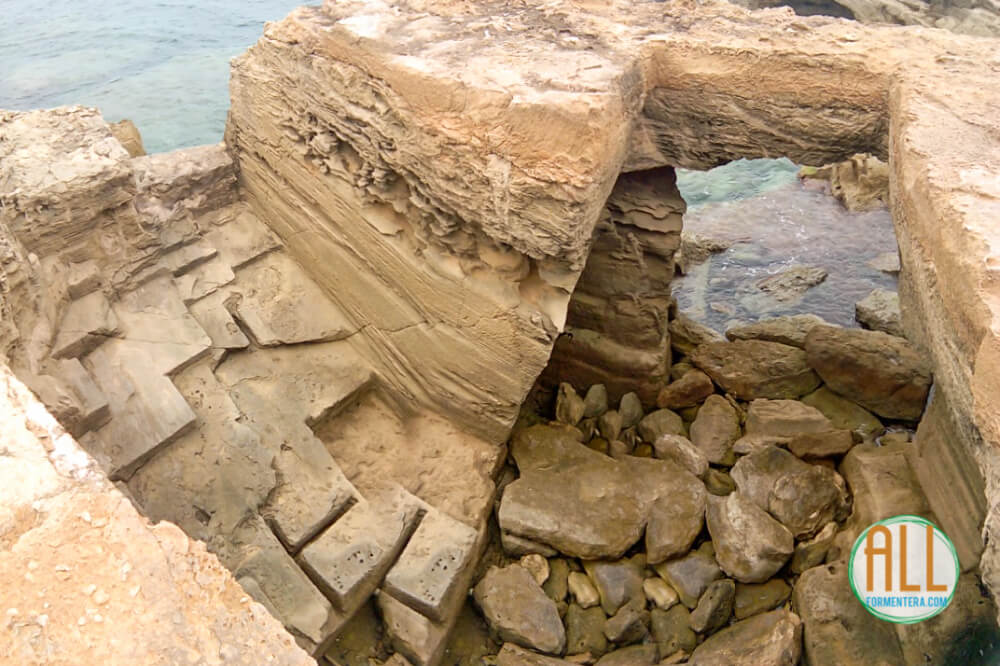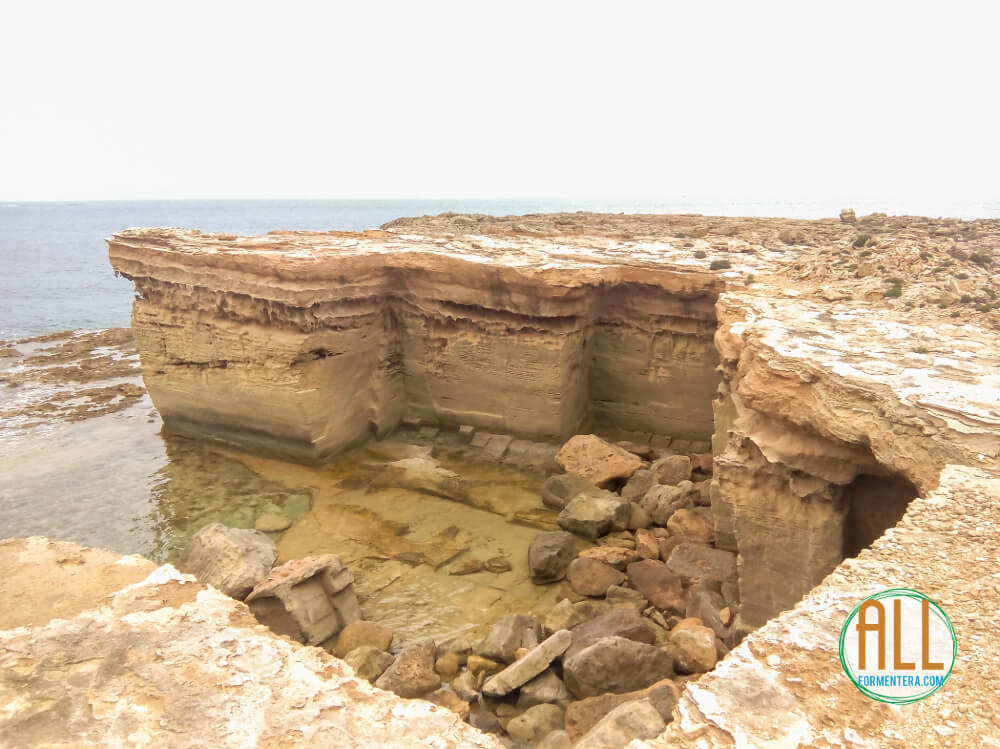Contenidos del artículo
Marés stone is the stone par excellence of the Balearic Islands, used for centuries to build all types of buildings (such as the cathedral of Mallorca) and walls. In this post we are going to review the history, uses and some quarries of marés that you can find on the island of Formentera, as well as some examples of buildings built with marés that you can visit during your vacation in Formentera.
What is marés stone

Marés stone is a sandstone type stone, that is, a sedimentary rock. Sedimentary rocks are those that were formed by the compression of several layers of sediments, usually silt or sand, and that after millions of years subjected to these conditions, they became rocks. Sedimentary rocks are the most common type of rock in the Earth’s crust.
As a curiosity, sandstones are used, in addition to as a construction material, for the manufacture of sharpening stones.
Marés stone is therefore a detrital sedimentary type rock (that is, formed by layers of sediments accumulated over thousands of years and mechanically compressed) that was formed from grains of sand, remains of fossil shells and small rock fragments. With the presence of carbonates, these sediments cement and harden over time.
It is estimated that the Marés stone of the Balearic Islands was formed approximately during the Quaternary (about 2.5 million years ago).
History of Marés as a construction stone
Marés was used in the Balearic Islands as a stone for construction since the Punic era and the beginning of the Roman Empire or even before, until approximately the 19th century.
Marés quarries currently active
Extracting marés sandstone in Formentera is no longer allowed, and all the sandstone quarries in Formentera are exhausted and/or have long since stopped being exploited. Currently the marés quarries that are still active are mainly located on the island of Mallorca.
However, in the case of Formentera, you can visit these marés quarries to see the “scars” that these exploitations left on the ground. Below we have left you some locations where you can see the cuts made in the ground to extract the Marés stone blocks.
Constructions in Formentera built with marés stone
If you want to see constructions built with Marés stone, in Formentera you have the opportunity to see some examples.

The watchtowers of Formentera
The five watchtowers of Formentera were built and raised using marés stone. So they are a good example of Balearic construction where sandstone has been used as the main element.
You can see the infos for each of the towers with historical and location information here:
- Tower des Garroveret
- Tower de Sa Punta Prima
- Tower des Pi des Català (restored and visitable, free entry)
- Tower de Sa Gavina
- Tower de Sa Guardiola (Espalmador island)
The Roman castellum of Can Blai

Another of the constructions that was built with marés stone is the Roman castellum of Can Blai, an unfinished fortification from the late imperial Roman period.
In the information sheet on our website you can read more about the castellum de can blai.
Old marés quarries of Formentera
As we said at the beginning of the article, marés was extracted in both Ibiza and Formentera for centuries, although in the case of Formentera all the quarries are exhausted, or are included within a protected natural area that prevents their reopening. So currently the only thing you can see in Formentera are abandoned marés quarries, but no less interesting just becasue they are abandoned.
Racó de Ses Pedreres (near Es Caló)
This place, where you will have to access on foot and even climbing the rocks a little, is a good example of a marés extraction point in Formentera.
The images that we present below are some of the marés extraction points in the Racó de Ses Pedreres area, as its name indicates (corner of the quarries) it is a place that brings together many small quarries from where marés was extracted for decades.
El Racó de ses pedreres is to the east of the beaches of Es Caló and you will have to walk and even climb a little to be able to visit them all.






Es Pujols
To the east of Es Pujols beach there are some small quarries from which marés sandstone was also extracted. The photo you can see below was taken approximately 500 meters east of Es Pujols Beach.
So that you can discover the surroundings of Formentera for yourself, we will not give you the exact location of this small quarry: take the opportunity to take a walk and try to find it yourself 😉

Punta Pedrera (Can Marroig)

This area is undoubtedly the most prominent marés extraction area in Formentera. It is located in the Can Marroig area, and rock extraction has shaped the landscape in this area of Formentera in a very peculiar way.
Currently some of the gaps left by the work have been filled with water, creating a kind of “natural pools”.
Below we leave you a photo gallery of this quarry:










